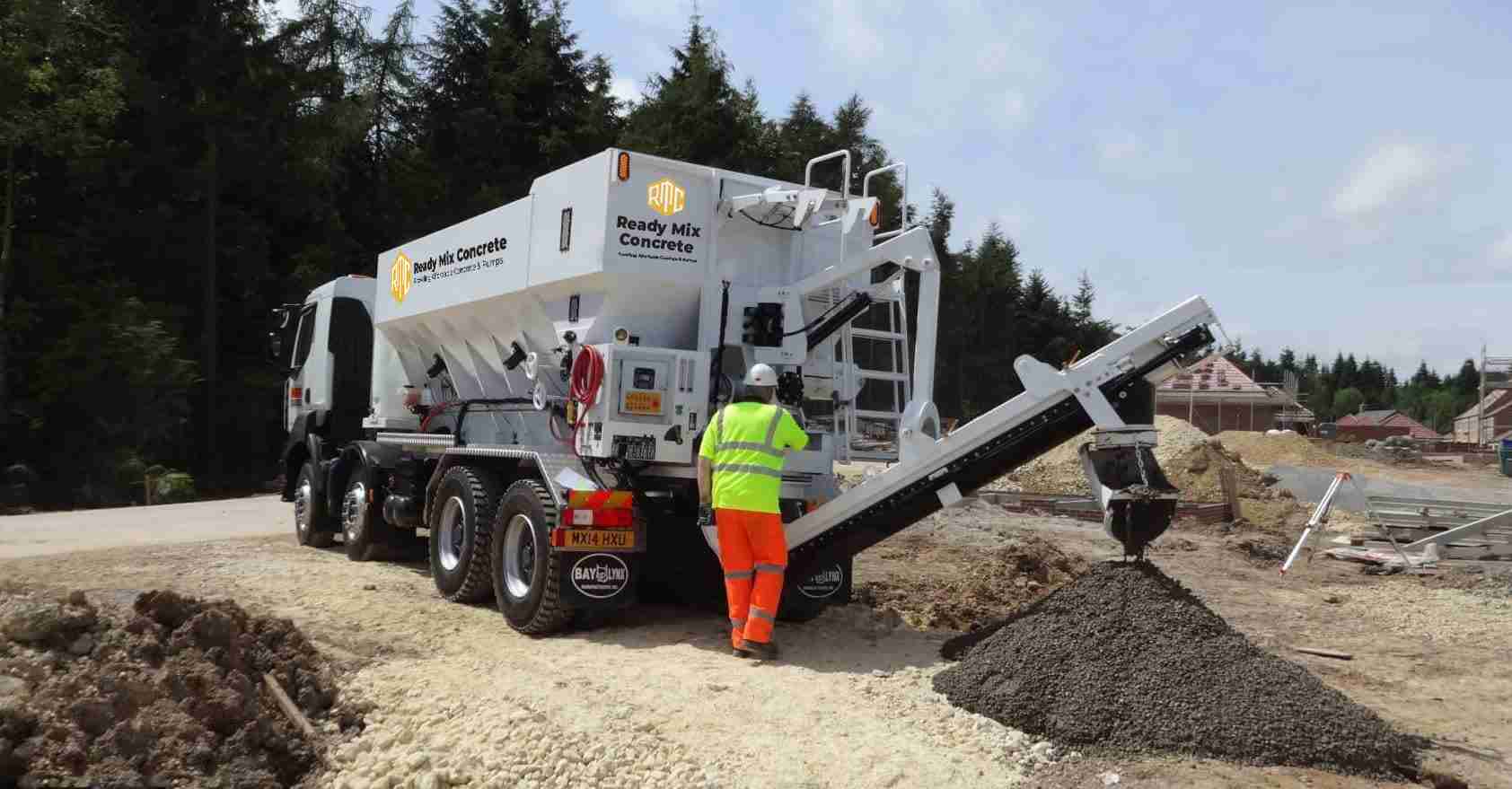Concrete needs to be poured within 90 to 120 minutes of mixing to maintain good quality. London traffic makes this tricky, so planning is huge. Delays mean concrete gets stiff and weak. British Standards say 2 hours maximum from batching to pouring. Special chemicals called retarders can add 1-2 extra hours if you need them. Booking deliveries at quiet times, prepping your site properly, using GPS tracking, and picking nearby batching plants all help beat the clock.
The second water hits the cement, it starts changing. Once that mixer truck leaves the plant, you’re racing the clock. London traffic can turn a simple delivery into pure stress. Every minute stuck on the North Circular or behind roadworks eats into your working time. Getting ready mixed concrete London deliveries spot-on is not only convenient, it’s everything. Professional ready-mixed concrete London suppliers understand these timing pressures and plan accordingly. It decides whether your concrete stays workable, gets strong properly, and passes inspections. Good timing means a solid pour. Bad timing means an expensive mess.
With London traffic, timing isn’t just about convenience but about keeping concrete workable. That’s why reliable suppliers matter. Pro-Mix Concrete uses real-time GPS tracking, nearby batching plants, and same-day or next-day scheduling to keep your mix fresh and ready when you are.
Order Your Ready Mix Concrete Now: 020 7458 4747
Why Fresh Concrete Matters So Much
Cement and water create hydration, a chemical process that builds strength over hours and days. This reaction runs constantly without pause buttons or rewind options. Missing the placement window shows up in structural tests, surface appearance, and building lifespan.
Proper placement timing delivers:
- Complete vibration for solid foundations
- Professional-looking polished floors
- Seamless connections between pours
- Straightforward building inspections
- Protected construction budgets
What Makes London So Tricky
Victorian-era streets weren’t designed for 32-tonne trucks. Congestion Charge Zones force route calculations. Low-emission requirements limit vehicle options. Utility works pop up without advance notice.
Construction teams face:
- Morning gridlock from 7-10 AM
- Parking enforcement, towing blocked vehicles
- Police escort requirements for oversized loads
- Unannounced accident diversions
- Sporting events are closing major arteries
How Long Does Concrete Stay Workable After Mixing?
Ready mixed concrete maintains plasticity for 90 to 120 minutes from batching. Beyond this window, placement becomes difficult and compaction suffers.
Understanding Your Time Window
Ready mixed concrete London batching plants measure time from water introduction. Truck loading happens 5-10 minutes later, but chemistry begins immediately.
Concrete behaviour changes over time:
- First hour: Flows easily, accepts vibration, finishes smoothly
- 60-90 minutes: Thickening begins, placement needs acceleration
- 90-120 minutes: Stiffening advances, finishing becomes challenging
- Beyond 2 hours: Setting commenced, structural concerns arise
Drum rotation during transport maintains suspension and delays visible changes. Chemical transformation continues regardless of mechanical mixing.
Variables That Speed or Slow Setting
Environmental conditions and mixture composition dramatically alter concrete behaviour.
- Temperature effects: Summer days above 25°C accelerate reactions, potentially reducing usable time to 60-75 minutes. Winter temperatures below 5°C extend windows but complicate placement and early strength development.
- Mix proportions: Engineers specify exact water-cement ratios for target strength. Excessive water improves flow but significantly weakens final structures. Site additions require documented supplier authorisation.
- Binder selection: Rapid-hardening varieties achieve early strength but set faster. Ordinary Portland provides longer working periods. Ground granulated blast-furnace slag extends timelines while enhancing durability.
- Chemical modifiers: Retarders temporarily block cement reactions, extending workability 1-2 hours. Accelerators promote faster setting for cold-weather applications. Both require precise batching plant dosing.
Impact of London Traffic on Delivery
Transportation delays create measurable quality degradation. Understanding physical changes helps teams make informed acceptance decisions.
What Happens When Trucks Get Stuck
Congestion alters concrete’s physical state progressively. Slump decreases as aggregates absorb moisture. Internal temperature rises from exothermic reactions. Workability declines exponentially rather than linearly.
Observable changes include:
- Reduced flow restricting pump operation
- Surface stiffening prevents trowel finishing
- Trapped voids from inadequate consolidation
- Elevated temperature is accelerating further, setting
- Distinct boundaries appear between loads
Example scenario: 10 minutes batching, 50 minutes standard travel, plus 40 minutes traffic delay, totals 100 minutes before discharge begins. Safety margins have evaporated.
Site-Specific Complications
Location characteristics compound transportation challenges.
- Access restrictions: Georgian terraces in Islington/Bloomsbury only allow 4m³ mini-mix trucks, doubling delivery frequency and coordination needs.
- Municipal requirements: Westminster requires a 48-hour delivery notice, while Kensington bans weekend work. Missed admin steps lead to truck rejections.
- Sequential coordination: Continuous slab pours are disrupted when a second truck is delayed 45 minutes, causing weak cold joints.
- Reception failures: Delays from reinforcement checks, formwork adjustments, or equipment faults force load rejection even when concrete arrives on time.
Response Protocols for Timing Problems
Establish procedures before issues develop.
- Communication infrastructure: Share contacts with dispatch, staff, and drivers. Use GPS tracking for real-time monitoring instead of waiting for issues.
- Time documentation: Tickets show batching time only. Calculate the actual transit time on arrival. Act when nearing 100 minutes.
- Quality verification: Conduct concrete slump tests at discharge. Compare results with specs and document with photos.
- Rejection authority: Supervisors must be empowered to reject loads, notify suppliers immediately, record evidence, and escalate to quality managers.
Guidelines for On-Site Concrete Usage
Arrival triggers specific verification procedures. Following industry protocols protects structural integrity and prevents expensive rejection scenarios.
What British Standards Say
UK construction follows BS 8500 and BS EN 206 specifications. These mandates require concrete discharge within 2 hours of batching under typical conditions. Extended time requires documented admixture use and technical justification.
Professional contractors target 90 minutes maximum rather than approaching the 2-hour limit. This buffer accommodates unexpected delays without quality compromise.
Practical timeline breakdown:
- Plant operations: 5-10 minutes of batching and loading
- Transportation: 30-60 minutes, depending on distance
- Discharge and placement: 15-30 minutes per 6-8 cubic meter load
- Optimal total: 50-100 minutes preserves quality margins
Spotting Bad Concrete
Train crews recognise problem material before placement begins.
Visual indicators:
- Dry appearance with aggregate separation
- Crusty film forming on exposed surfaces
- Bleed water separated from solid components
- Resistance when flowing from the discharge chute
Physical assessments:
- Slump measurements showing 50mm+ specification deviation
- The vibrator is unable to achieve proper consolidation
- Trowel dragging rather than smoothing surfaces
- Elevated temperature indicates advanced hydration
Schedule pressure never justifies placing questionable material. Repair costs dwarf rejected load expenses. Uncertain situations warrant thorough testing or complete rejection.
Concrete quality and delivery concerns shouldn’t slow down your project. With our 20+ years of experience and network of local batch plants, we guarantee fresh concrete delivery and provide full technical support from dispatch to pour completion.
Contact Our Quality Team: 020 7458 4747
How To Check Every Load
Follow consistent evaluation procedures for all deliveries.
- Initial documentation review: Examine delivery tickets upon truck arrival. Verify batching timestamp, not departure time. Add transportation duration. Calculate total age accurately before discharge authorisation.
- Workability testing: Conduct slump cone tests before any concrete leaves trucks. This provides objective data versus subjective judgment. Record measurements on delivery paperwork for quality records.
- Discharge observation: Watch concrete behaviour leaving chutes. Consistent flow indicates good condition. Separation, balling, or hesitation signals problems requiring investigation.
- Technical consultation: Borderline situations warrant expert input. Concrete suppliers employ qualified technicians specifically for these decisions. Describe observations accurately, provide timing data, and follow professional recommendations.
- Record retention: Write detailed notes directly on delivery documentation. Photograph the concrete condition, test results, and truck identification. Keep copies in project files for future reference or dispute resolution.
Regulatory and Industry Standards in London
UK construction operates under strict concrete specifications. British and European standards establish clear timing requirements protecting building quality and public safety across all projects.
What National Standards Say
British concrete production operates under comprehensive quality standards.
- BS 8500 framework: This comprehensive standard covers constituent materials, mix design, durability classification, and production control. It defines how concrete should be made, tested, and delivered, ensuring consistent quality across the industry.
- BS EN 206 timing provisions: The European standard specifically addresses delivery timeframes. It mandates concrete discharge within 2 hours of batching unless an extended time is received with documented approval and admixture use.
Key regulatory clauses:
- Two-hour maximum from mixing to final placement
- Longer periods are permissible with approved retarding admixtures
- The producer maintains responsibility for specification compliance
- Testing is mandatory when timing limits face challenges
How London Companies Work
London suppliers often exceed minimum regulatory requirements.
- Supplier policies: Leading London concrete companies typically impose 90-minute limits as company policy despite the 2-hour regulatory maximum. This provides a safety margin accounting for capital traffic unpredictability while protecting the quality reputation.
- Major project specifications: Infrastructure developments frequently mandate tighter controls. Crossrail extensions, Thames Tideway construction, and Transport for London works commonly specify 90-minute maximum delivery times with complete batch traceability.
- Traceability systems: Professional suppliers maintain comprehensive quality records. Every batch receives a unique identification linking dispatch time, arrival time, test results, placement location, and weather conditions. This protects both parties during quality investigations or disputes.
Final Call
Concrete timing in London demands realistic expectations and proactive management. The 90-120 minute window from batching to placement represents a physical constraint, not a flexible guideline. Traffic disruptions will occur, but systematic preparation prevents them from becoming project disasters. Scheduling deliveries outside congested periods, specifying retarders when delay risks are elevated, and maintaining open supplier communication channels form the foundation of successful concrete work in the capital.
Navigating London traffic with concrete doesn’t have to be stressful. At Pro-Mix Concrete, we’ve mastered on-time delivery across the capital with 20+ years of experience. We supply ready-mix concrete and mix-on-site concrete for residential, commercial, and industrial projects. Our technical team provides real-time support, flexible mix designs with retarder options, and same-day or next-day delivery service.
Schedule Your Delivery Now: 020 7458 4747
Frequently Asked Questions
What happens if the concrete delivery is delayed by London traffic?
Traffic delays cause concrete to lose workability and begin setting prematurely. This results in difficult placement, reduced strength, poor compaction, and potential structural failures requiring costly repairs.
Are there additives to extend concrete's usable time in traffic delays?
Yes, retarding admixtures can extend the concrete’s workable period by 1-2 hours. These chemicals slow the hydration process without affecting final strength, providing flexibility during unexpected traffic delays.
What is the official time limit for ready-mix concrete use?
British Standards BS 8500 and BS EN 206 recommend discharging concrete within 2 hours of batching. However, best practice targets 90 minutes to ensure optimal quality and workability.
How can delivery delays be minimised in London?
Minimise delays by scheduling outside peak traffic times, using GPS-tracked deliveries, choosing local batching plants, ensuring complete site readiness, and maintaining clear communication with your concrete supplier.
What risks come from using concrete that's been delayed in traffic?
Delayed concrete risks include compromised strength, surface cracks, poor durability, cold joints, failed inspections, and potential structural safety issues. These problems lead to expensive repairs and project delays.
- Dennis Broderick
- Dennis Broderick is the founder and owner of Pro-Mix Concrete Company, a trusted name in ready-mix concrete solutions across the UK. With over 20 years of hands-on experience in the construction and concrete industry, Dennis brings unmatched expertise, practical insights, and a commitment to quality on every project - from residential driveways to large-scale commercial developments.
BlogOctober 28, 2025Line Pump Hire vs. Boom Pump Hire Prices in London
BlogOctober 25, 2025How Quickly Concrete Must Be Used Once Delivered In London Traffic
BlogOctober 23, 2025How To Get The Best Value When Hiring A Concrete Pump For A Small Domestic Job?
BlogOctober 19, 2025How Local Supply Issues and Transport Affect Concrete Cost and Quality?








